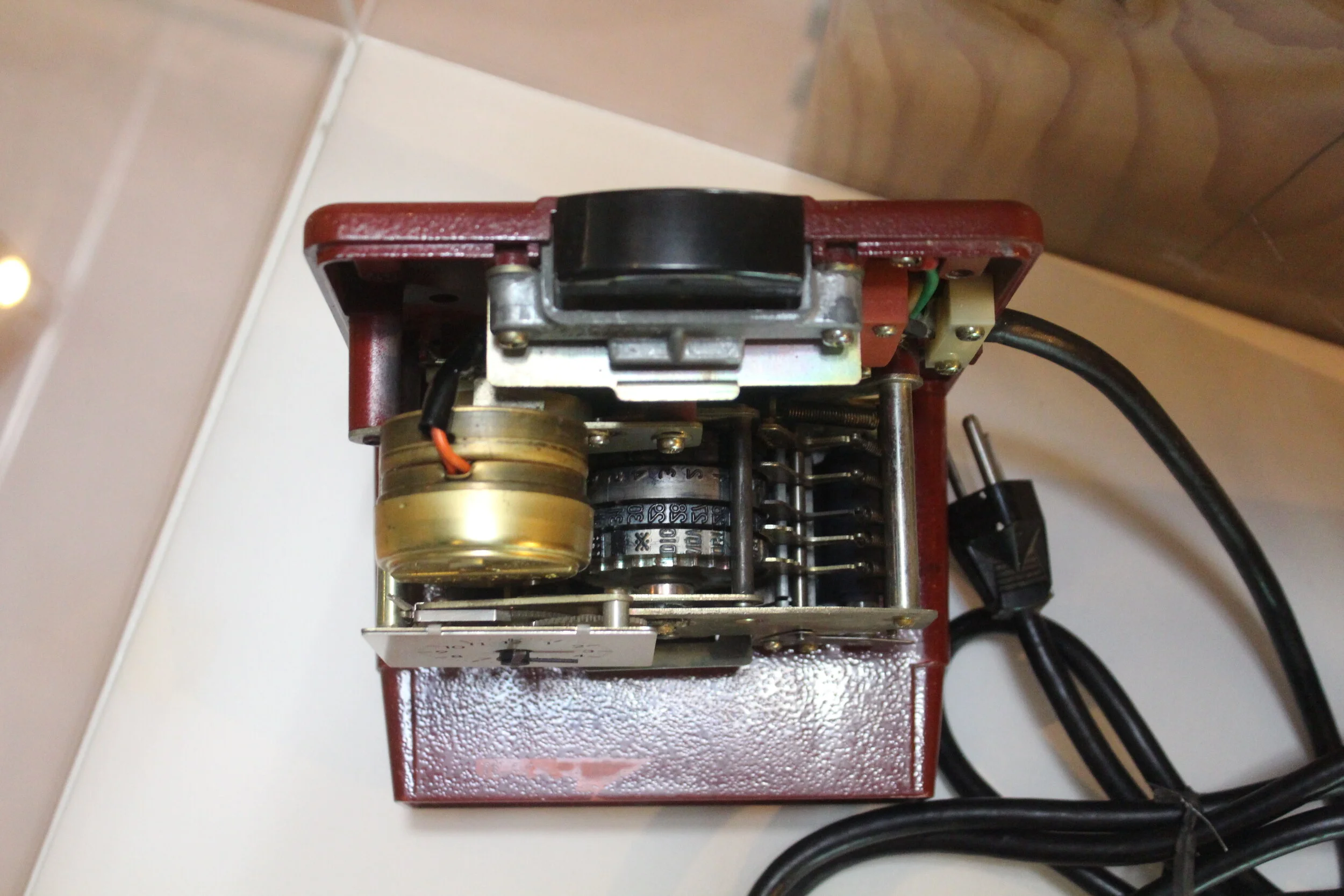September’s Artifact of the Month is an Amano Time Clock, which is not only a beautiful piece of machinery, but also a part of Redding’s history. Built by Amano Time Systems, a Japanese manufacturer in the 1970s, it was used in Redding’s premier upscale department store at the time, Dicker’s.
Artifact of the Month: Haida Argillite Sculpture
Artifact of the Month: Ice Chipper
Artifact of the Month: Historic Remedies
Artifact of the Month: Victorian Pickle Castor
How providential that we are able to present this perfectly pleasing yet peculiar pickle paraphernalia! This is not your ordinary pickle jar! In fact, it probably didn’t hold the type of pickles we are most familiar with today – those delicious, tangy, former cucumbers. Before the ubiquity of refrigeration, jams, jellies, pickles, and chutneys preserved produce for future consumption. Victorian pickle recipes included sweet pickled cantaloupe, pickled onions, cauliflower, cabbage, radish pods, nasturtium seeds, walnuts, as well as the more familiar gherkins and cucumbers. Spiced or pickled fruits such as sour plums, blackberries, cherries, and pears were also popular. Yum!
Artifact of the Month: Powder Horn
You may think this is a horn to blow – a type of trumpet to gather the troops and charge into battle! Though these objects were sometimes used in battle, by local militiamen during the Revolutionary War for example, powder horns served a different purpose. In addition to bullets and the firearms themselves, powder horns carried another important part of the kit – gunpowder!
Artifact of the Month: Bentwood Box
Artifact of the Month: Opera Glasses
Long before we cozied up for a movie with a bowl of popcorn and a loved one, shuffled through our iPod playlist, cheered to a baseball game on the radio, or sheltered-in-place, folks sought live entertainment in the company of friends and strangers. It was both intimate and communal. Performances such as plays, operas, ballets – even music, magic, and comedy – took place on a big, well-lit stage. Patrons sat in a darkened auditorium. Some were close enough to see the sweat of an actor’s brow, yet some sat too far to make out important details that helped tell the story. Sporting events like horse racing also presented a need to see the action from a distance. Luckily, a series of technological advances led to an elegant solution – opera glasses.
Union Bank Gifts Turtle Bay with $5,000 Donation
Turtle Bay Exploration Park will be FREE to Kool April Nites attendees on Saturday, April 27, 2019, thanks to a generous donation from Union Bank.
Artifact of the Month: Trench Knife
Art Cycled
Where some people see junk, others see potential. Local artists converge for this exhibition of recycled, upcycled, and just plain rescued art! This group-curated pop-up features work by established and emerging artists working in a wide variety of media for a limited time, now through August 3, 2018 in the East End of the Museum at Turtle Bay in Redding, CA.
Museum Collections
The Turtle Bay Museum Collection consists of over 35,000 historical, ethnographic, and archaeological artifacts and artworks. It is amalgam of the collections of the former Redding Museum of Art and History and The Forest Museum and includes objects acquired after the museums merged into Turtle Bay. Today, Turtle Bay is not actively collecting due to lack of funding, space, and personnel.
Black Friday Sale
Join us for our Black Friday Sale to save 25% off all store inventory from 8:30am to noon, Friday November 24th. The museum store offers a wide assortment of items including Turtle Bay, Redding, and California souvenirs, jewelry, one-of-a-kind gifts, local merchandise, as well as, fun and educational toys for all ages.
Redding Cultural District
#ThisIsTurtleBay
North State Giving Tuesday
Exhibitions Opening Reception
Smokerjumper Exhibition
The National Smokejumper Association presents this exhibition about the fascinating history of the United States Forest Service Smokejumper program. Guests will learn what it takes to be a Smokejumper, dive into the history of fire suppression in the United States, explore how the program came about, and even discover its role in homefront defense during WWII.
Weekend Photos: Material Culture, Science Saturday, Animal Programs
This past weekend, Turtle Bay opened Material Culture; Form, Function and Fashion - a unique exhibition curated in-house from our own collection of textiles and materials. this touchy-feely exhibition goes back into pre-history; takes a journey down the Silk Road; examines the roots of the Industrial Revolution; looks at the concept of fashion; and takes a peek at the future of fabric.

























